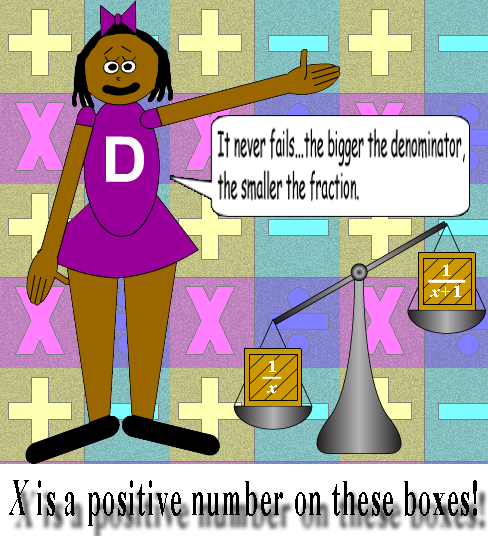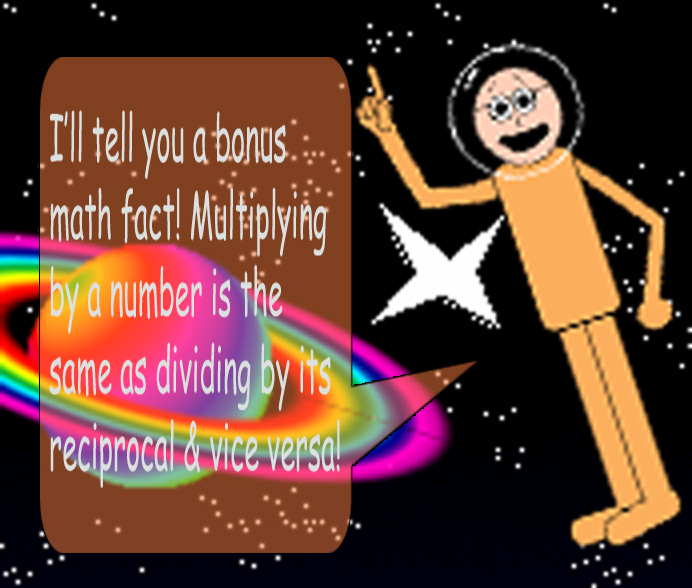
| Fraction #1 | Fraction #2 | Quotient |
|---|---|---|
| 1/2 | 1/3 | 3/2 or 1 + 1/2 |
| 1/3 | 1/4 | 4/3 or 1 + 1/3 |
| 1/4 | 1/5 | 5/4 or 1 + 1/4 |
| 1/5 | 1/6 | 6/5 or 1 + 1/5 |
| 1/6 | 1/7 | 7/6 or 1 + 1/6 |
| 1/7 | 1/8 | 8/7 or 1 + 1/7 |
| 1/8 | 1/9 | 9/8 or 1 + 1/8 |
| 1/9 | 1/10 | 10/9 or 1 + 1/9 |
| 1/x | 1/(x+1) | (x+1)/x or 1 + 1/x |
| Fraction #1 | Fraction #2 | Quotient |
|---|---|---|
| 1/3 | 1/2 | 2/3 |
| 1/4 | 1/3 | 3/4 |
| 1/5 | 1/4 | 4/5 |
| 1/6 | 1/5 | 5/6 |
| 1/7 | 1/6 | 6/7 |
| 1/8 | 1/7 | 7/8 |
| 1/9 | 1/8 | 8/9 |
| 1/10 | 1/9 | 9/10 |
| 1/(x+1) | 1/x | x/(x+1) |
However, there's only 1 difference this time: the quotient is less than 1. That's because the smaller fraction gets divided by the bigger fraction. The quotients in the 2nd table are the reciprocals of the quotients in the 1st table!


Back to Index Page Back to Math Trick Menu
© Derek Cumberbatch